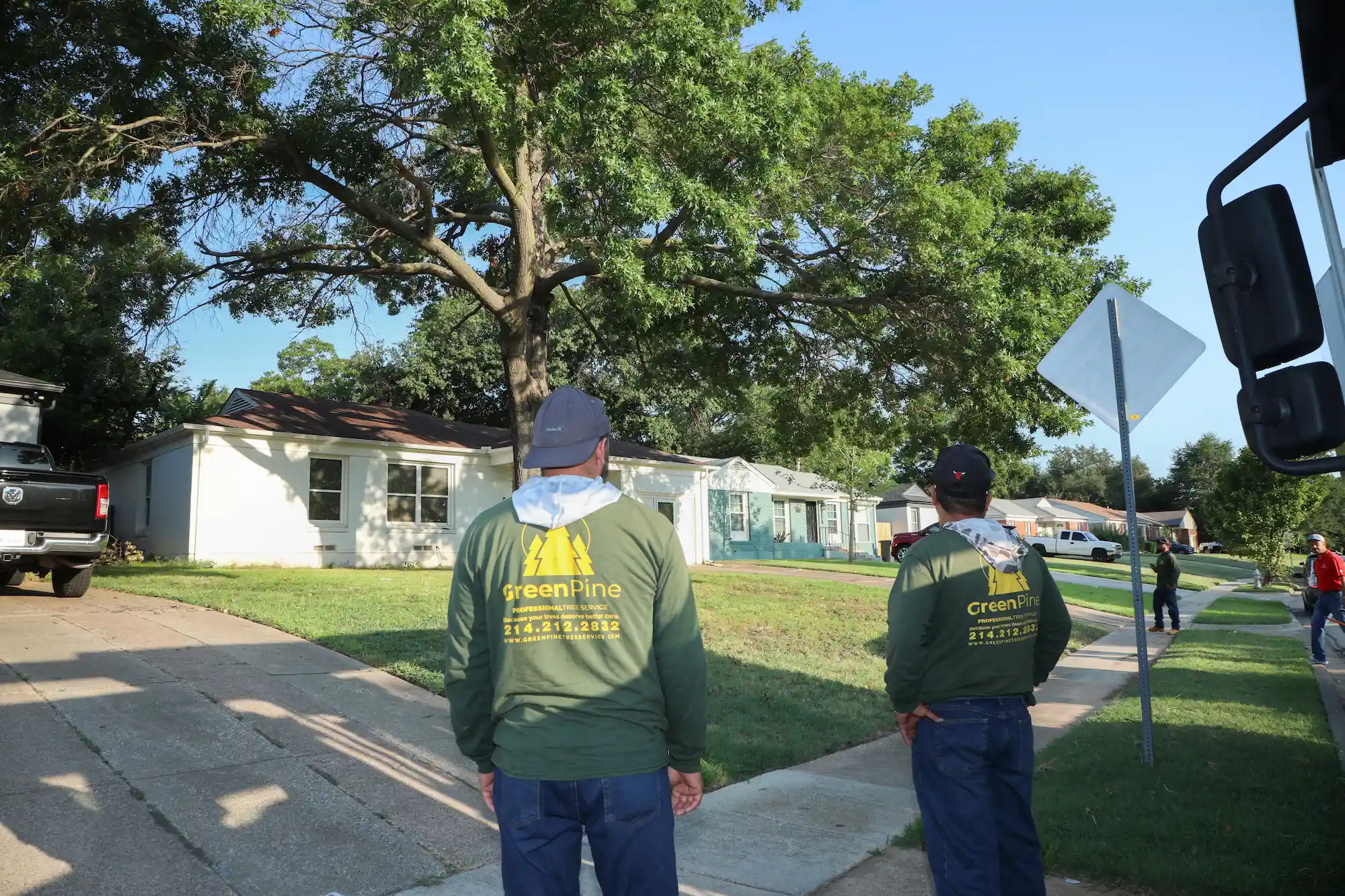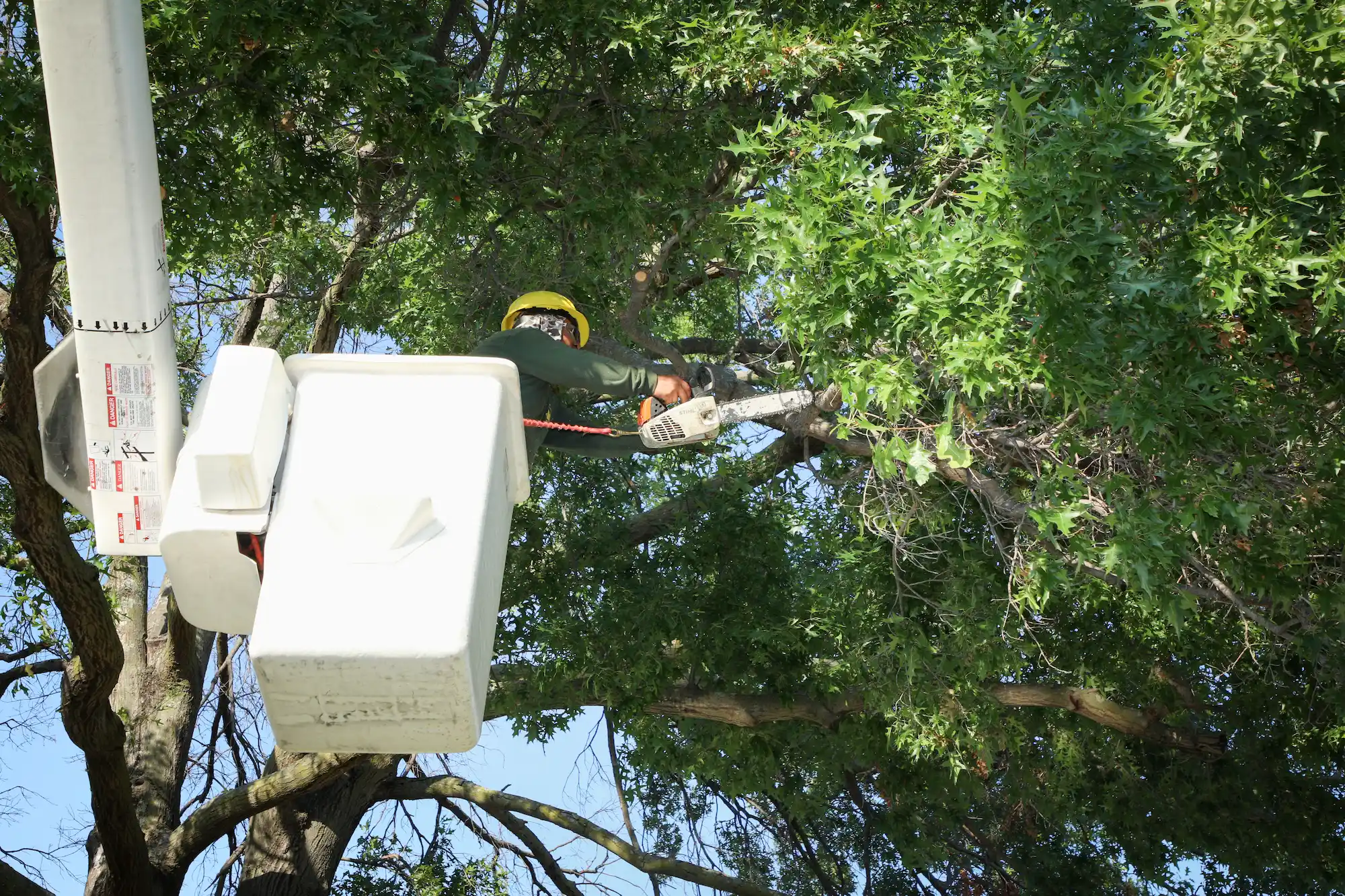A Q&A guide to oil and gas regulation in the United States.
The Q&A gives a high-level overview of the domestic oil and gas sector, rights to oil and gas, health safety and the environment, sale and trade in oil and gas, tax and enforcement of regulation. It covers transfer of rights; transportation by pipeline; environmental impact assessments; decommissioning; waste regulations and proposals for reform.
Domestic sector
1. What is the role of the domestic oil sector in your jurisdiction?
Domestic production
The US produced 12.232 million barrels per day (bpd) of crude oil in 2019, over 60% of which was produced from shale or tight oil resources. The most significant share of production occurred in:
-
Texas (5.069 million bpd).
-
Federal offshore areas (1,883 million bpd).
-
North Dakota (1,404 million bpd).
-
Colorado (514 million bpd).
-
Alaska (466 million bpd).
As a result of the effects from the spread of the 2019 novel coronavirus disease (COVID-19), in May 2020, the US Energy Information Administration (EIA) estimated production to decrease to an average of 11.7 million bpd in 2020 and 10.9 million bpd in 2021. From March through June 2020, oil shale production has decreased on average by 100,000 bpd as compared to last year. The largest oil shale plays in the US include:
-
The Permian Basin in western Texas.
-
Bakken shale in North Dakota.
-
Eagle Ford in southern Texas.
Oil imports/exports market
Since 2005 (the peak year of US imports), US oil imports decreased from 3.695 billion barrels to 2.48 billion barrels in 2019.
Before December 2015, exports of oil rarely exceeded 100,000 bpd because they were only permitted in certain circumstances. However, the US ban on oil exports was lifted in December 2015 and oil exports have increased tenfold to 1.086 million bpd (as of 2019).
Domestic market structure
Most oil and natural gas produced in the US is from privately-owned resources. Landowners may be entitled to produce oil and natural gas from their land.
Certain oil and natural gas resources are owned by the federal government, state governments or Native American tribes. Oil and natural gas resources in tribal lands can be developed by the US Government on behalf of the tribes. States can develop resources beneath land that is in the state and owned by the state. Under the Submerged Lands Act, states can develop resources from submerged lands from the coastline to no more than three nautical miles into the Atlantic or Pacific oceans and the Gulf of Mexico (Texas and Florida can develop resources from submerged lands from the coastline up to three marine leagues). The US Federal Government can produce oil from federally-owned land and submerged lands beyond state-controlled land (including on the outer continental shelf). Federal and state governments usually lease their production rights to private entities.
Government policy objectives
Current US federal policy encourages domestic production of oil and natural gas. This policy has been implemented in multiple ways, including:
-
By issuing executive orders to ease restrictions associated with fracking.
-
Repealing prior bans on certain offshore drilling locations.
-
Permitting certain oil pipelines.
Other than easing environmental regulations or encouraging production through tax benefits, the federal government’s role in US oil production is limited. State governments play a more expansive role. State policies vary greatly.
Current market trends
West Texas Intermediate crude oil prices began 2020 at approximately US$57 per barrel. Due to concerns regarding the effects of COVID-19, an oversupply of oil developed and prices dropped precipitously in the spring and even reached negative US$36.98 on April 20, 2020. Since then, prices have rebounded and reached on average US$38.31 in June 2020.
2. What is the role of the natural gas sector in your jurisdiction?
Domestic production
The US produced 33,657 billion cubic feet (bcf) of natural gas in 2019. The most significant share of production occurred in the following states:
-
Texas.
-
Pennsylvania.
-
Louisiana.
-
Oklahoma.
-
Ohio.
US natural gas production from shale resources increased from 1,293 bcf in 2007 to 22,054 bcf in 2018 (over two thirds of total US natural gas production in 2018). For period March 2020 to June 2020 during the COVID-19 pandemic, natural production for US shale resources increased by 14 bcf per day from a year earlier during the same time period. The largest shale plays in the US are the Marcellus, Permian basin, Haynesville, Utica, and Eagle Ford.
US liquefied natural gas (LNG) imports peaked in 2007 at 770 bcf and decreased to just 52 bcf in 2019. US LNG exports have increased from a low of 3 bcf in 2013 to 1,819 bcf in 2019 (the largest amount exported by the US).
Natural gas imports/exports
In 2019, the US exported 4,655,977 million cubic feet (mcf) of natural gas. Approximately 60% of the exports were by pipeline to Mexico and Canada, and the rest were LNG exports. Exports to Mexico have grown by over 300% since 2011.
The US imported 2,741,641 mcf of natural gas in 2019, over 80% of which was imported by pipeline from Canada. Just 52,828 mcf of natural gas was imported as LNG, a decrease of approximately 95% since 2007.
Domestic market structures
Ownership of natural gas resources in the US is similar to oil resources (see Question 1, Domestic market structure). Property rights associated with natural gas resources are typically governed by state law, unless the natural gas is located beneath land owned or controlled by the federal government.
Government policy objectives
The current US administration’s policy encourages domestic production of oil and natural gas (see Question 1, Government policy objectives).
Current market trends
In 2019, natural gas spot prices at Henry Hub decreased from US$3.11 per million British thermal units (mbtu) in January to US$2.22 per mbtu in December. Over the past decade, natural gas prices have decreased by over 50%. Natural gas is frequently produced in fields that are developed for their oil resources. Surging natural gas production has been pushing natural gas prices down which has led to increased exports to Mexico by pipeline and created a new market for LNG exports. Due to the effects of COVID-19, natural gas prices at Henry Hub have decreased to as low as $1.42 per mbtu on 19 June 2020, and averaged as low as $1.63 per mbtu in June 2020.
3. Are domestic energy requirements met by domestic oil and gas production?
Oil requirements
Domestic crude oil demand is met through domestic production and a relatively small amount of net imports.
Natural gas requirements
The US consumed 31.014 trillion cubic feet (tcf) of natural gas in 2019, about 2 tcf less than the total amount of natural gas produced by the US. Natural gas was mainly exported to Mexico by pipeline and through LNG exports.
4. Are there specific government policies to encourage the exploration and production of unconventional gas or oil?
At the federal level, the current US administration has begun to encourage domestic oil and natural gas production by repealing certain regulations that may have disincentivised production (see Question 1 and Question 2). However, there are no specific federal government policies in place to encourage domestic production or specifically production from unconventional sources (as of the end of 2019).
At the state level, certain jurisdictions (such as New York) have banned hydraulic fracturing because of environmental concerns. Environmental and other regulations on exploration and production vary by state.
Taxes on oil and natural gas production vary by state. For example, Pennsylvania has seen considerable growth in natural gas production since 2010 due to the Marcellus shale play in the state. Since 2011, Pennsylvania has charged an annual fee for each new well drilled into shale formations.
Regulation
Regulatory bodies
5. Who regulates the exploration and production of oil and gas?
Oil
Oil and natural gas exploration and production is largely regulated by the state where the activity is taking place. State regulation varies greatly, but most states with oil and natural gas drilling activity regulate the following:
-
Location of drilling activity.
-
Waste management and other environmental concerns.
-
Safety issues.
Different agencies in each state may have jurisdiction over each category of regulation.
The Federal Government regulates oil and natural gas exploration and production under the:
-
Resource Conservation and Recovery Act (RCRA).
-
National Environmental Policy Act.
-
Clean Air Act.
-
Clean Water Act.
-
Marine Mammals Protection Act.
-
Endangered Species Act.
The Federal Government also regulates the exploration and production on federal lands and in certain offshore areas under the:
-
Submerged Lands Act.
-
Outer Continental Shelf Lands Act.
-
Federal Oil and Gas Royalty Management Act.
-
Mineral Leasing Act.
Federal regulation is provided by the:
-
Environmental Protection Agency (EPA).
-
Department of Interior.
-
Bureau of Land Management (BLM).
The regulatory regime
6. What is the regulatory regime for onshore and offshore oil and gas exploration and production?
See Question 5.
Enforcement of regulation
7. What are the regulator’s enforcement powers?
Orders
Exploration and production is largely regulated by the state in which the activity occurs (see Question 4 and Question 5). Each state has its own regulatory authority whose enforcement powers may vary greatly. At the federal level, the Federal Energy Regulatory Commission (FERC) has authority under the Natural Gas Act (NGA) to fine violators of its regulations and orders. The FERC also has authority to impose civil penalties under the Interstate Commerce Act (ICA) applicable to oil pipelines. The Commodity Futures Trading Commission (CFTC) may also impose fines for violations of its market rules.
The BLM also inspects oil and natural gas wells under its jurisdiction.
Fines and penalties
Under the Energy Policy Act 2005, The FERC may require violators of its natural gas rules to disgorge profits and pay fines up to about US$1 million per day for each day of a continuing violation. Under the ICA, the FERC can impose civil penalties between US$1,250 and US$12,500 per day for violations of its regulations and orders by oil pipelines. The CFTC can also require persons found in violation of CEA and Dodd-Frank to disgorge profits and pay fines. Finally, if an operator of an oil or natural gas well is not in compliance with BLM regulations, the BLM can impose civil penalties and/or terminate the operator’s lease agreement.
8. Is there a right of appeal against the regulator’s decisions?
Administrative decisions by state and federal agencies can generally be appealed, depending on the laws in each jurisdiction. The time frame and appeal procedures vary widely by jurisdiction.
Rights to oil and gas
Ownership
9. How are rights to oil and gas held?
Generally, state property law sets out who holds the right to oil and natural gas produced (federal law may apply to land owned by the federal government and certain offshore areas). While the particulars of state laws vary across the US, rights to oil and natural gas extracted from the ground are generally held by the surface landowner (unless these rights have been severed). The mineral interest in a property can be sold separately from the surface portion of property. Rights to oil and natural gas can also be split from each other, and so can rights to producing from different strata below the property. Mineral interest owners can typically reasonably occupy the surface property to extract oil and natural gas from the property.
States typically follow either the rule of capture or the correlative rights doctrine. Under the rule of capture, owners of a tract of land generally can extract oil and natural gas from their property. Any extracted oil or natural gas is the property of that owner regardless of how or when it is extracted. In contrast, under the correlative rights doctrine, land owners’ right to oil and natural gas resources beneath their land is limited by state laws intended to prevent waste and protect adjacent land owners.
For federal oil and natural gas resources, the BLM administers on shore leases and the Bureau of Ocean Energy Management (BOEM) administers offshore leasing.
Nature of oil and gas rights
10. What are the key features of the leases, licences or concessions which are issued under the regulatory regime?
Lease/licence/concession terms
Owners of the rights to extract oil and natural gas can enter into contracts (typically leases) with other entities to explore for or develop oil and natural gas, subject to their ownership rights. Such leases are usually not subject to scrutiny from a regulatory body. Leases in terms of federal or state government controlled resources, are usually granted based on a competitive bidding process, and are awarded based on the best terms offered and the reputation of the entity making the bid.
Fees
A royalty is normally paid by the lessee to the mineral rights holder as a percentage of the gross production from the lease. The royalty is typically 12.5% of the production. The federal government may also charge a rental charge and a “bonus.”
Liability
Leases usually contain an indemnification clause that holds the mineral rights owner harmless from all claims and causes of action arising from the activity of the lessee. However, the liability terms are subject to negotiation between the lessee and the lessor.
Restrictions
Oil and natural gas leases typically require the lessee to produce oil or natural gas within a reasonable timeframe to retain the lease. Leases restrictions may vary greatly.
11. How are rights to explore for and produce oil and gas awarded?
Leases to explore and develop oil and natural gas supplies on private land are awarded by landowners through private negotiation and are subject to state contract law. Federal or state leases are typically awarded through a competitive bidding process and may be available for public review. An example is provided below.
The BOEM prepares a five-year program of proposed lease sales for oil and natural gas leases on the outer continental shelf. The programme shows the size, timing and location of leasing activity as precisely as possible. An extensive process is then followed in issuing leases. BOEM first publishes a notice requesting that the industry identifies specific blocks in the program for which there is interest in leasing. Then, BOEM performs an environmental impact statement (EIS) on the area identified that can be leased. After BOEM receives comments in response to the EIS, it publishes a notice of sale with the proposed time and location of the proposed lease sale, together with the terms and conditions of the lease. After receiving comments regarding the notice of sale, BOEM provides a final notice of sale. Bidders can then submit bids. The bidding period typically lasts 90 days. BOEM can either accept a bid or reject all bids for the proposed lease.
With respect to foreign investments in US assets, the jurisdiction of the Committee on Foreign Investment in the US is very broad, and given the infrastructure security concerns that have been expressed recently, this may be a more sensitive area than in the past.
Transfer of rights
12. How are oil and gas rights transferred?
Transfer of rights
Oil and natural gas rights are typically transferred by a sale of property or a lease agreement. Both types of transfers normally are governed by the law of the state where the property is located. By contract, the mineral rights holders may require the lessee to produce commercial quantities of oil or natural gas in a reasonable time period to retain the lease.
Restrictions on transfer
The contract or lease agreement between entities may contain restrictions on the transfer of oil and natural gas rights, as negotiated between the parties.
Tax
13. What payments are payable by oil and gas interest holders to the government?
Oil and natural gas production is not taxed at the federal level. However, states can tax oil and natural gas production in a number of ways (including by volume, value, or a combination of these). The rates and means of taxation vary greatly across states. Additionally, entities that have produced and sold oil and natural gas are subject to state and federal income taxes, as well as a sales tax.
14. What taxes and duties apply on import and export of oil and gas?
Taxes and duties associated with importing and exporting oil and natural gas from or to the US depend on the country to or from which an import or export is made. The United States-Mexico-Canada Agreement (USMCA) is a successor to the North American Free Trade Agreement (NAFTA). The USMCA continued to eliminate fees and tariffs on natural gas imported from or exported to Canada or Mexico. The US generally imposes tariffs on the import of oil from countries other than Canada and Mexico.
To import or export natural gas (including LNG) to or from the US, the entity importing or exporting the gas must obtain authorisation from the Department of Energy’s Office of Fossil Energy under the NGA. If the importer/exporter has a signed gas purchase or sales contract for more than two years, it may obtain a long-term authorisation for the period of the agreement. All other authorisations are provided on a blanket basis for two-year periods.
Transportation by pipeline
15. What regulatory requirements apply to the construction of oil and gas pipelines?
Oil pipelines
Oil pipeline construction is not federally regulated (except for border crossings as explained below). Multiple state agencies (depending on the oil pipeline’s location) can exercise jurisdiction over the construction and operation of an interstate oil pipeline. In addition, oil pipelines must gain federal environmental approvals under the Clean Water Act, Clean Air Act and other laws. Property rights can be obtained from states using the state’s eminent domain authority. If a proposed oil pipeline intends to cross a US border, the Secretary of State must approve the crossing and issue a presidential permit.
Gas pipelines
The FERC has jurisdiction over the construction and operation of interstate natural gas pipelines under the NGA. During the past twenty-five years, the FERC has looked to determine if a pipeline has been subscribed under precedent agreements; if so, the FERC will grant certification. Before seeking a FERC certificate, pipelines typically seek agreements with landowners to construct. However, when agreement cannot be reached and the pipeline has been certified, the proposed pipeline company can acquire an easement under eminent domain (that is, compulsory purchase) by obtaining a court determination of the just compensation for the landowner. If a pipeline operates in a single state and does not transport any natural gas that has travelled or will travel across a state boundary, it is outside FERC’s jurisdiction and is generally regulated by the state where it operates. State agencies generally grant certificates to authorise the construction of single-state pipelines and proposed pipeline companies may be able to utilise the state’s eminent domain authority to acquire easements for the pipeline’s construction. Pipeline construction is also impacted by federal and state environmental agencies and regulations. See Question 5.
16. What regulatory requirements apply to the operation of oil and gas pipelines?
Oil pipelines
Federal regulation applies to the operation of interstate oil pipelines and the FERC has jurisdiction over the rates charged by interstate oil pipelines. Interstate oil pipelines can charge market-based (after they show that the pipeline does not have market power) or cost-based transportation rates (based on the cost of constructing and operating the pipeline) that can be changed in line with changes in inflation index values.
State agencies have jurisdiction over oil pipelines that are not regulated by the FERC. The service rates for such pipelines are typically based on the cost of service. Under OCSLA, some oil pipeline issues may be the domain of the federal district courts.
Gas pipelines
The FERC has jurisdiction over the operation of interstate natural gas pipelines under the NGA and the Natural Gas Policy Act (NGPA). The FERC has jurisdiction over the rates charged by pipelines providing interstate service. Interstate natural gas pipelines’ rates are set based on the pipeline’s cost of providing service. However, pipelines can enter into discounted or negotiated rates with shippers (if it is does not amount to undue discrimination). Intrastate pipelines’ rates are usually set by state agencies using a variety of methodologies, including cost of service ratemaking.
17. Is there a system of third party access to pipelines and other infrastructure?
Oil pipelines
Whether the oil pipeline’s rates are regulated by the federal or a state government, the oil pipeline is usually a common carrier unless the pipeline carries only its owner’s proprietary production. Therefore, oil pipelines cannot create preferential contract provisions that guarantee service by designating a portion of the pipeline’s capacity for the exclusive use of one shipper or class of shippers without explanation and justification. To avoid this, oil pipelines typically have prorationing policies. Prorationing may be based on historic usage or another method that more readily permits new shippers to obtain service. When approving rates and terms and conditions of service for newly constructed oil pipelines, the FERC has permitted such pipelines to designate certain shippers as anchor or foundation shippers. Pipelines operating on the Outer Continental Shelf must provide transmission service on an open and non-discriminatory basis. This is to allow such shippers to hold capacity on the pipeline if a certain percentage of capacity is still available to all entities seeking transportation services. Third-party access to non-federally regulated oil pipelines varies by state jurisdiction.
Natural gas pipelines
Unlike oil pipelines, interstate natural gas pipelines are not common carriers. The FERC requires interstate natural gas pipelines to provide non-discriminatory open access to their pipeline systems. Pipelines must sell service through existing uncontracted capacity to customers that are creditworthy and willing to pay the maximum cost-based rate for transportation services. However, if an interstate pipeline’s capacity is already reserved, third parties cannot require the pipeline company to expand capacity to provide such service (except in limited circumstances). Third parties can acquire contracted pipeline capacity rights from existing shippers through a secondary market. Intrastate natural gas pipelines regulated by state agencies also typically permit capacity reservations. However, the regulations regarding such pipelines vary depending on the state where they operate.
The BLM and the BOEM also require pipelines operating on federal land and on the Outer Continental Shelf to provide open access transportation.
Health, safety and the environment
Health and safety
18. What is the health and safety regime for oil and gas exploration and production, and transportation by pipeline?
Exploration
The health and safety of on-site workplace personnel is regulated at the federal level by the Occupational Health and Safety Administration (OSHA). States may also have agencies that regulate health and safety of on-site personnel.
In general, the health and safety of the public associated with exploration and extraction of oil and natural gas is administered by state agencies. Many states have begun to consider specific regulations associated with hydraulic fracturing.
On the outer continental shelf, the US Bureau of Safety and Environmental Enforcement regulates worker safety for drilling operations.
Transportation
Regarding the health and safety of on-site personnel, see above, Exploration.
The health and safety of the general public associated with the transportation of oil and natural gas is regulated by the Pipeline and Hazardous Materials Safety Administration (PHMSA) and other state agencies. PHMSA establishes national policy, and sets and enforces standards for pipeline safety. Pipelines must be constructed, operated, maintained and abandoned in accordance with PHMSA regulations.
Different portions of the US Department of Transportation regulate the transportation of oil by railway.
Environmental impact assessments (EIAs)
19. Is an EIA required before extracting or processing onshore or offshore oil and gas?
An EIA is required before the federal government will enter into leases of oil and natural gas rights on federal land or on the Outer Continental Shelf. The assessment is required by law and is conducted by the federal government.
EIAs may also be required by state governments before drilling for oil or natural gas. Drilling activities are typically subject to state oversight, unless such activities occur on federally-controlled land, and many states require oil and gas developers to apply for and receive a permit before engaging in drilling activities. Applications for such permits usually require the developer to:
-
Set out the anticipated environmental effects associated with its drilling activities.
-
Propose environmental mitigation measures.
Such permits will typically detail the scope of the state’s authorisation to conduct drilling activities, and may include restrictions on drilling activities or require developers to take certain environmental protection and mitigation measures. See also Question 22.
20. What are the different stages of the EIA?
Environmental assessment processes vary greatly by state. Under the National Environmental Policy Act (NEPA), federal agencies must prepare an EIS for any major federal action (in some instances, the construction of pipeline) that is determined to significantly affect the quality of the human environment. Alternatively, an agency may prepare an environmental assessment upon a finding of no significant impact (FONSI). When conducting an EIS, the agency first publishes a notice of intent in the Federal Register. Second, the agency publishes a draft environmental analysis for public review and comment. After comments on the analysis are reviewed, the agency files a final version of its work. 30 days after the filing, the agency can make a final decision whether to pursue the major federal action. The final decision must provide an explanation by describing the alternatives considered by the agency and discussing the agency’s plans for mitigation and monitoring (if necessary).
Environmental permits
21. Is there a permit regime for environmental damage or emissions produced during the extraction or processing of oil and gas?
States and localities have established a variety of minimum distances between wells and occupied structures. Many states require oil and natural gas drill operators to obtain air and water emission permits before construction and drilling. For example, in Texas, operators must obtain an Air Quality permit from the Texas Commission on Environmental Quality.
To begin drilling a well on the Outer Continental Shelf, an operator must obtain a permit from the US Bureau of Safety and Environmental Enforcement. The Bureau regulates oversight of worker safety, emergency preparedness, environmental compliance and conservation of resources.
Environmental concerns
22. Are there any specific government policies and/or incentives aimed at meeting the environmental concerns associated with the exploration and production of oil and gas?
The EPA issued a rule limiting the methane emissions of oil and natural gas drilling sites. The rule was challenged in court, and when the new administration took office, the EPA began to consider how the rule can be abolished.
The environmental impact from hydraulic fracturing activities is an ongoing concern of both federal and state governments. In December 2016, EPA issued a final report on hydraulic fracturing that concluded that such activity can impact drinking water resources under some circumstances. The report identifies factors that influence these impacts. EPA has begun to propose rules and work with states to regulate the management of wastewater, stormwater and other wastes from hydraulic fracturing activities.
Some states have banned hydraulic fracturing.
Waste
23. What are the regulations on the disposal of waste products resulting from oil or gas extraction or processing?
Generally, the US regulates the disposal of wastes from crude oil and natural gas extraction and processing under RCRA and state regulations. Regulations regarding the disposal of waste products vary greatly by state. Regulations typically involve:
-
Liner requirements.
-
Clear definitions of waste fluids and characterisation requirements.
-
Operational controls, maintenance and closure.
-
Financial assurance requirements.
-
Regulation of waste injection wells.
Many states also require disclosure of the chemicals used in hydraulic fracturing.
Waste products from oil and natural gas wells subject to federal jurisdiction are regulated by the BLM.
Flares and vents
24. Do regulations in place apply to the flaring or venting of oil and gas?
In 2018, the BLM rescinded much of the 2016 Methane Waste and Prevention Rule that had attempted to limit the venting and flaring of natural gas. A court recently overturned that rescission.
State regulations regarding flaring and venting vary by state. For example, Texas allows oil and gas wells to flare during the drilling phase and for up to ten days after a well’s completion for potential testing of the well. After that period, Texas requires operators to obtain a permit to flare. Short-term flaring permits are typically granted for flaring of casinghead gas (that is, oil well gas) from oil wells.
Decommissioning
25. What are the decommissioning obligations and liabilities that arise?
Wells on federal lands must follow the requirements for well plugging and abandonment issued by the BLM. Wells under state jurisdiction must follow the regulations of the state in which they are located. Leases may also establish plugging and decommissioning obligations of lessees.
Typically, an operator must notify the state that it intends to abandon a well and conduct surface reclamation. Unless otherwise agreed, all development of the site (pads, pits and roads) must be returned to a safe condition and revegetated. Once the site is reclamated, the operator usually notifies the state for final approval of abandonment.
The scope of reclamation and obligations vary greatly across states and according to the type and size of the well that is being abandoned.
Sale and trade
26. How is trade in oil and gas usually carried out?
Trading in oil and natural gas commodities and futures can take place over-the-counter or on a public exchange such as the Chicago or New York Mercantile Exchanges. Futures transactions are regulated by the CFTC.
Oil
Oil can be sold wholesale or retail to end users. Rates for such sales are not regulated. However, oil markets are regulated (see Question 27).
Natural gas
Natural gas can be sold at wholesale or retail to end users. Wholesale prices for the commodity of natural gas are not regulated. However, sales of natural gas to end users by local distribution companies (LDCs) are often regulated. Typically, the price associated with acquiring a given quantity of natural gas is passed on to consumers through a pass-through clause and the LDC does not make any profits from such sales. Markets for natural gas are regulated (see Question 27).
27. Are oil and gas prices regulated?
The CFTC monitors commodity futures markets, including the markets for crude oil and natural gas futures. The CFTC enforces the anti-manipulation provisions of the Commodity Exchange Act and Dodd-Frank Act.
The FERC monitors energy transactions that involve physical transfers of natural gas, in particular enforcing the anti-manipulation provisions of the Energy Policy Act 2005.
In the past, the US Department of Energy has purported to exercise authority to set conditions upon the import/export of hydrocarbons.
The Federal Trade Commission is responsible for preventing manipulation of petroleum markets In addition, agencies in certain states may have local responsibility for comparable acts.
Insurance
28. Are there any insurance requirements that must be met by companies exploring for, producing or transporting oil & gas?
Requirements for insurance (if any) vary by the authority that has jurisdiction over the well.
Reform
29. Are there plans for changes to the legal and regulatory framework?
2020 is an election year in the US and various candidates have proposed changes to US oil and natural gas policy, including banning fracking activity, eliminating carbon pollution from power plants by 2035 (in 2019, electric generation was the largest end use category of US natural gas supplies), and aggressively reducing conventional and greenhouse gas pollution in the oil and gas sector.
In contrast, the current administration has proposed reductions to current regulations including changes to how environmental reviews are conducted under NEPA.
Contributor profiles
Mark F Sundback, Partner
Sheppard Mullin LLP
T +1 202 747 1946 F +1 202 747 1901 E msundback@sheppardmullin.com W www.sheppardmullin.com Professional qualifications. District of Columbia, US; US Court of Appeals for the First, Fifth, Ninth, Tenth and D.C. Circuits
Areas of practice. Pipelines; federal energy regulatory; state energy regulatory; electricity; oil and gas.
Recent transactions
-
Involved in the regulation of natural gas pipelines since 1981 (including rates, accounting, enforcement and certificate issues).
-
Served as first chair in numerous contested proceedings before the FERC (including over a score of contested rate proceedings).
-
Advised pipelines or project developers across the country, with regard to facilities that serve states such as Florida, Alaska, Maine and California.
-
Advises new pipeline projects concerning open seasons, rights of first refusal, contracting and other critical path matters.
-
Involved in compliance and enforcement matters.
-
Has been active in cases involving some of the largest bankruptcies, or threatened bankruptcies, in the energy industry, and in extensive litigation involving the rate consequences of such bankruptcies.
Non-professional qualifications. JD, Columbia Law School, 1981; BA (magna cum laude), Dickinson College, 1978
Professional associations/memberships
-
Listed in Best Lawyers in America.
-
Ranked as a Super Lawyer in Washington Lawyer Magazine.
-
Ranked as a leading attorney by Chambers & Partners USA, Chambers & Partners Global, and The US Legal 500.
-
Rated AV by Martindale-Hubbell for more than 15 years.
Publications
-
“In Pursuit Of Fair Compensation For Grid Reliability”, Law360 (6 July 2010).
-
“Can an RTO’s Performance Be Measured?”, Law360 (30 March 2010).
-
“FERC’s Proposed Disclosure of the Names of Office of Enforcement Targets”, Law360 (15 March 2010).
-
“FERC’s New Return on Equity Formulas Are Out of Sync”, Law360 (3 June 2020).
Bill Rappolt, Partner
Sheppard Mullin LLP
T +1 202 747 3317 F +1 202 747 3881 E wrappolt@sheppardmullin.com W www.sheppardmullin.com Professional qualifications. District of Columbia, US, 2017; Maryland, US, 2010: US Court of Appeals for the District of Columbia, and the US Court of Appeals for both the Fourth and Ninth Circuit
Areas of practice. Federal energy regulatory; state energy regulatory; electricity; oil and gas.
Recent transactions
-
Experience in litigation proceedings in the energy industry as both an analyst and an attorney, before FERC and/or state regulatory agencies involving oil and gas matters.
-
Has counselled oil and natural gas companies regarding regulatory compliance with:
-
FERC and NERC rules;
-
standards of conduct;
-
interconnection issues;
-
tariff interpretation and drafting;
-
contract interpretation and drafting;
-
due diligence for potential purchases or sales;
-
construction and abandonment projects;
-
authorisations required under section 7 of NGA; and
-
rate-making issues, such as cost of service and return on equity in NGA section 4 and 5 proceedings and ICA proceedings.
-
-
Represented interstate and intrastate natural gas pipelines, natural gas storage companies, liquefied natural gas (LNG) companies, liquids and oil pipelines, gathering pipelines and natural gas and liquids/oil pipeline shippers (such as marketers) before the FERC.
-
Recently assisted an interstate natural gas pipeline throughout a NGA section 4 rate proceeding, brought to a successful conclusion.
-
Represented a natural gas storage company in its successful efforts to obtain market-based rates.
-
Frequently provides tariff advice to clients regarding the interpretation of tariffs administered by natural gas and liquids/oil pipelines under the NGA and ICA at FERC.
-
Has provided advice to several clients regarding the jurisdictional reach of FERC under both the NGA and ICA.
-
Has advised various clients on FERC compliance issues, interconnection issues, and pipeline construction and abandonment under section 7 of NGA.
Non-professional qualifications. JD, American University Washington College of Law; BA (Economics), University of Maryland, 2003
Professional associations/memberships.
Ranked as a Rising Star in Washington Lawyer Magazine.
Member of the Energy Bar Association.
Member of the Maryland Bar Association.
Publications. “FERC’s New Return on Equity Formulas Are Out of Sync”, Law360 (3 June 2020).
Andrew P Mina, Associate
Sheppard Mullin LLP
T +1 202 747 2327 F +1 202 747 3899 E amina@sheppardmullin.com W www.sheppardmullin.com Professional qualifications. District of Columbia, US, 2017; Massachusetts, US, 2012
Areas of practice. Federal energy regulatory; state energy regulatory; electricity; oil and gas.
Recent transactions
-
Representing energy companies in a variety of federal and state regulatory matters, particularly before the FERC and state utility commissions.
-
Counselling oil and gas pipelines and other industry participants on regulatory issues, including those related to utility ratemaking, natural gas supply and compliance.
-
Has advised oil and gas pipelines on state regulatory requirements, associated with the development of new oil and gas facilities.
Non-professional qualifications. JD, Boston College Law School, 2012; BS, The Pennsylvania State University, 2009
Professional associations/memberships. Vice Chair, American Bar Association-Energy Infrastructure, Siting and Reliability Committee; Member of the Energy Bar Association.
Publications
-
FERC Rejects Net Metering Petition, But Fight is Far From Over (2020).
-
FERC Energy Capacity Orders Invite Lawsuits, Uncertainty (2020).
-
FERC’s New Return on Equity Formulas are Out of Sync (2020).
-
A Blow To Crypto Miners Disputing Local Energy Rates (2020).
-
Walking the Path of Utilities’ Ownership of Wind and Solar (2020).
-
FERC Issues Revised Guidance Regarding Return on Equity Calculations (2020).
-
Securing the U.S. Bulk Power System: An Assessment of Executive Order 13920 (2020).
-
FERC Reaffirms Controversial Energy Capacity Decisions: Insights and Analysis (2020).
-
FERC Orders, Notices, and Other Guidance Regarding the Novel Coronavirus (2020).
-
FERC Continues to Squeeze Renewable Resources Participating in Wholesale Electric Capacity Markets (2020).
-
FERC Holds the Line on One-Year Limit for State Review of Clean Water Act Certifications for Interstate Natural Gas Pipelines (2020).
-
Considering Blockchain In The Electricity Industry (2018).
-
The Climate Report (Winter 2017).
-
FERC, Facing Rare Loss of Quorum, Delegates Additional Authority to Its Staff, but Uncertainties Remain (February 2017).
-
The Climate Report (Summer 2016).
-
The Climate Report (Spring 2016).
-
IRS Extends Windpower Developers’ Time to Receive Production Tax Credits (May 2016).
by Mark F Sundback, Bill Rappolt, Andrew P Mina, Sheppard Mullin LLP



















